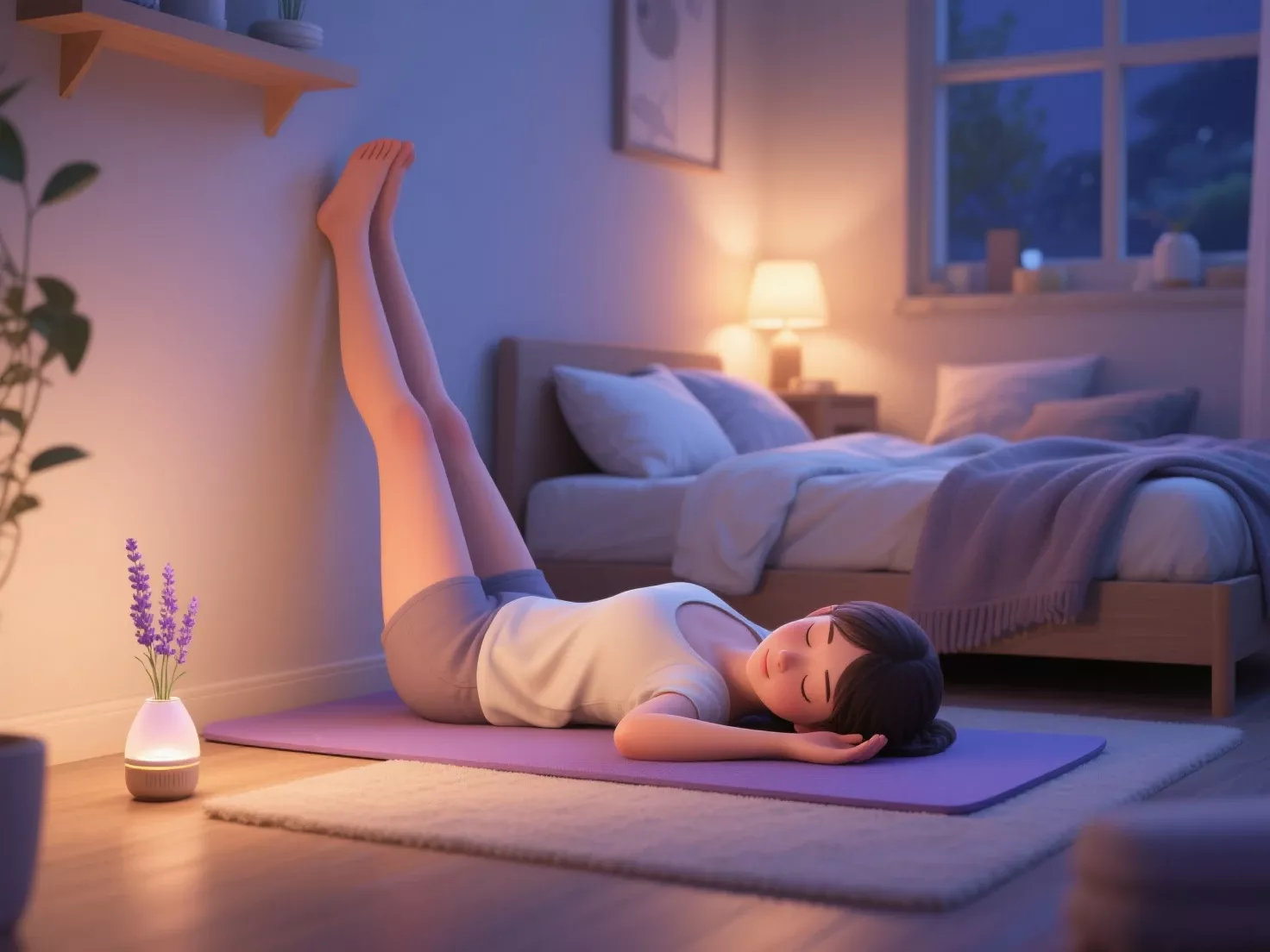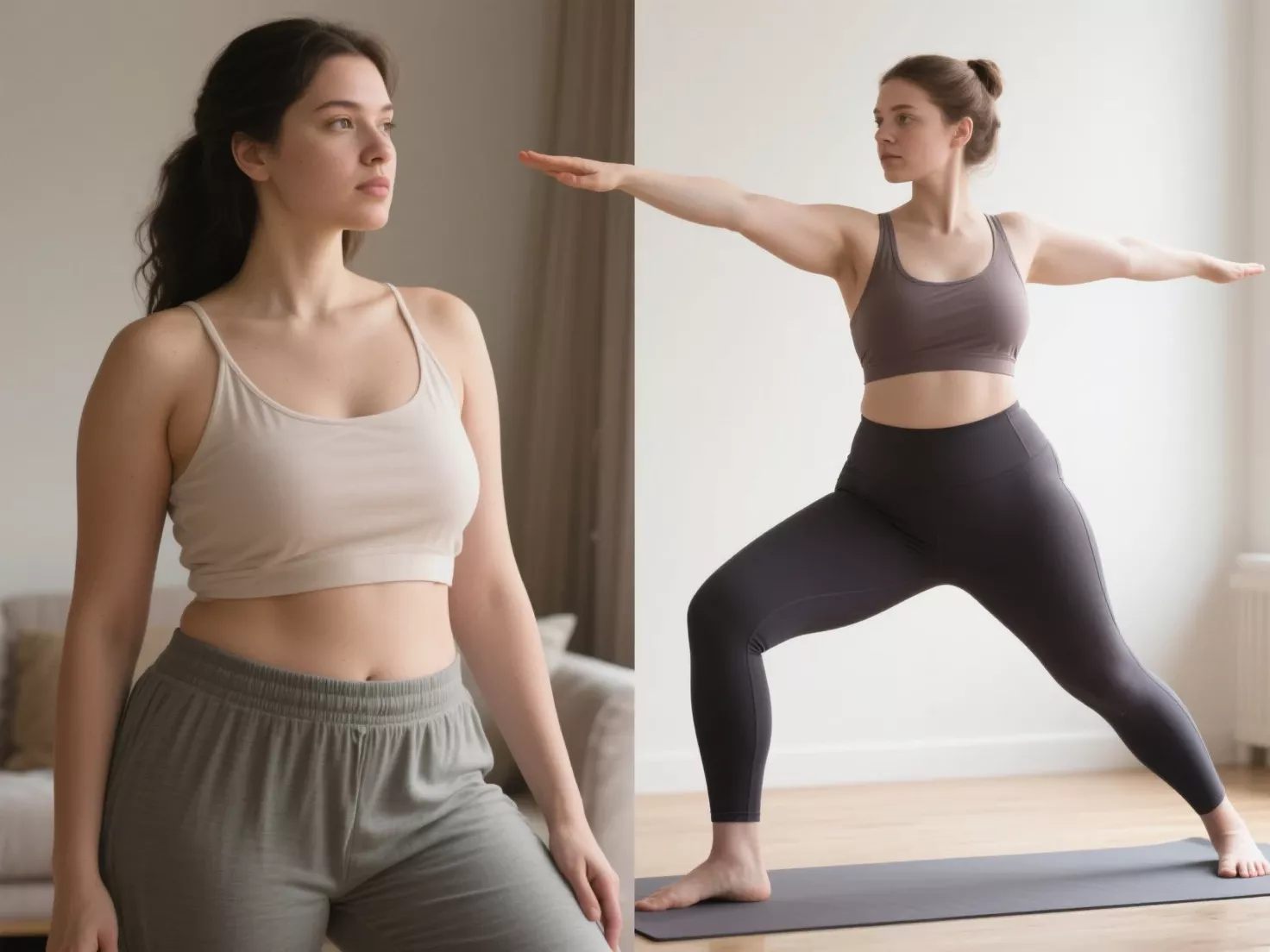Sleep is one of the most essential components of physical and mental health, yet many people today struggle with falling asleep, staying asleep, or getting restful, uninterrupted rest.
Chronic stress, overstimulation, anxiety, poor posture, and irregular sleep routines often contribute to poor sleep quality.
Fortunately, one holistic and accessible practice — yoga — can dramatically improve your sleep through consistent practice and mindful integration into your routine.
Yoga is much more than stretching; it’s a powerful combination of breath awareness, movement, mindfulness, and relaxation techniques that work together to regulate your nervous system and optimize your sleep cycle.

In this comprehensive article, we’ll explore exactly how yoga can improve sleep quality, the science behind it, and how to create your own bedtime yoga routine.
🧠 The Science Behind Yoga and Sleep
Yoga enhances sleep in a variety of ways, backed by both ancient wisdom and modern science. It works on multiple physiological and psychological levels:
1. Activates the Parasympathetic Nervous System
Most people spend their day in a state of “fight or flight” — the sympathetic nervous system’s default setting under stress.
Yoga helps transition the body into the parasympathetic state (“rest and digest”), where the heart rate slows, cortisol decreases, and the mind relaxes.
By calming the nervous system, yoga helps the body naturally prepare for restful sleep, reducing the time it takes to fall asleep and increasing sleep depth.
2. Reduces Cortisol and Anxiety
Cortisol, the body’s stress hormone, is a known enemy of deep sleep.
Studies have shown that regular yoga practice lowers cortisol levels and reduces symptoms of anxiety and depression, both of which can negatively impact sleep.
By integrating breathing exercises (pranayama) and meditation, yoga provides tools for mental stillness, emotional regulation, and inner calm — all necessary for a healthy night’s sleep.
3. Improves Sleep Latency and Duration
According to a 2019 review published in The Journal of Clinical Sleep Medicine, yoga has been found to reduce sleep latency (how long it takes to fall asleep) and improve sleep duration and sleep efficiency, especially in older adults and people with insomnia.
🧘 Yoga Styles Best Suited for Sleep
Not every yoga practice is sleep-enhancing. While Power Yoga or Vinyasa can energize the body and stimulate circulation, gentle, slow-paced practices are ideal before bed.
| Yoga Style | Best For |
|---|---|
| Restorative Yoga | Deep physical and mental relaxation, supported poses |
| Yin Yoga | Long-held, passive stretches for the fascia and joints |
| Yoga Nidra | Deep guided meditation, also called “yogic sleep” |
| Hatha Yoga | Slow transitions, calming breathwork, and simple poses |
| Pranayama & Meditation | Breath and mental focus techniques that soothe the mind |
💤 Best Yoga Poses to Improve Sleep Quality
Here’s a list of gentle yoga poses that are effective in relaxing the body and preparing for a deep, restorative sleep.
Hold each pose for 2–5 minutes, using props like pillows, bolsters, or blankets as needed.
1. Legs-Up-The-Wall (Viparita Karani)
-
Promotes blood flow to the heart
-
Reduces swelling in the legs and feet
-
Calms the nervous system
2. Child’s Pose (Balasana)
-
Gently stretches the back, hips, and thighs
-
Promotes inward focus and safety
-
Helps reduce anxiety and nervous tension
3. Reclined Bound Angle (Supta Baddha Konasana)
-
Opens the hips and chest
-
Releases emotional tension stored in the pelvis
-
Can be supported with bolsters for deeper rest
4. Supine Twist (Supta Matsyendrasana)
-
Massages internal organs
-
Releases spinal tension and aids digestion
-
Helps relieve back pain that can disturb sleep
5. Savasana (Corpse Pose)
-
Trains the body to relax deeply without sleep
-
Often practiced with breath awareness or body scans
-
Leads into Yoga Nidra or meditation
🌬️ Breathing Exercises (Pranayama) to Induce Sleep
Breath is one of the most powerful tools in yoga to regulate the mind.
Practicing pranayama before bed can lower your heart rate, balance oxygen and CO₂ levels, and signal the body to enter a state of rest.
1. 4-7-8 Breathing
-
Inhale through your nose for 4 seconds
-
Hold your breath for 7 seconds
-
Exhale through your mouth for 8 seconds
-
Repeat 4–8 times
This pattern slows the breath, which slows the heart, eases the mind, and reduces racing thoughts.
2. Alternate Nostril Breathing (Nadi Shodhana)
-
Balances the brain’s hemispheres
-
Clears emotional tension
-
Inhale through the left nostril, exhale through the right — then switch sides
-
Repeat for 3–5 minutes
3. Bhramari (Bee Breath)
-
Humming sound during exhalation creates vibration
-
Soothes the vagus nerve and calms overthinking
-
Excellent for insomnia caused by mental chatter
🕰️ Sample 15-Minute Bedtime Yoga Routine
You don’t need an hour to benefit from yoga. This simple 15-minute flow can improve your sleep if practiced regularly:
-
Seated Forward Fold – 2 minutes
-
Legs-Up-The-Wall – 3 minutes
-
Reclined Butterfly – 2 minutes
-
Supine Twist (both sides) – 4 minutes
-
Savasana with 4-7-8 breathing – 4 minutes
Do this routine in low lighting with calming music or silence. Use a lavender-scented diffuser or light a candle to engage your senses.
🧠 Mindfulness and Yoga Nidra for Sleep
Yoga Nidra (“Yogic Sleep”)
Yoga Nidra is a guided meditation that takes the body into a deep state of rest while the mind remains awake.
It can simulate sleep, helping to relieve fatigue, anxiety, and mental tension.
It is particularly effective for people with chronic insomnia or PTSD-related sleep issues.
Popular apps and YouTube channels offer 10–40 minute Yoga Nidra sessions you can do from bed.
📊 Research on Yoga and Sleep
| Study | Findings |
|---|---|
| Harvard Medical School (2009) | Yoga improved sleep efficiency, sleep duration, and reduced sleep onset latency in participants with chronic insomnia. |
| Frontiers in Psychiatry (2020) | Regular yoga and meditation significantly improved sleep quality in patients with depression and anxiety disorders. |
| Indian Journal of Psychiatry (2017) | 8 weeks of yoga practice led to statistically significant improvements in sleep quality, reduced stress, and better emotional regulation. |
🙋 Frequently Asked Questions
1. Can yoga cure insomnia?
Yoga may not “cure” insomnia, but it can greatly reduce its severity by lowering anxiety, improving physical comfort, and supporting circadian rhythm alignment.
2. Is it okay to do yoga right before bed?
Yes — but choose gentle and slow-paced styles. Avoid vigorous or hot yoga sessions late at night as they can stimulate rather than relax.
3. How long before I see results in my sleep?
Many people notice improvements within 1–2 weeks of regular practice, especially when done before bed. For lasting results, commit to a 4–6 week routine.
4. Should I combine yoga with other sleep hygiene tips?
Absolutely. Pair yoga with a consistent bedtime, reduced screen time, limited caffeine, and a calming environment for the best results.
🌟 Final Thoughts
Yoga offers a deeply effective, holistic solution to poor sleep quality — not through force, but through balance.
It teaches the body to release, the breath to lengthen, and the mind to let go.
With regular practice, you can fall asleep faster, sleep longer, and wake up feeling more grounded and energized.
“Sleep is the golden chain that ties health and our bodies together. Yoga helps polish that chain until it glows.”
Whether you’re a beginner or an advanced practitioner, yoga can be your gentle companion to better rest.



